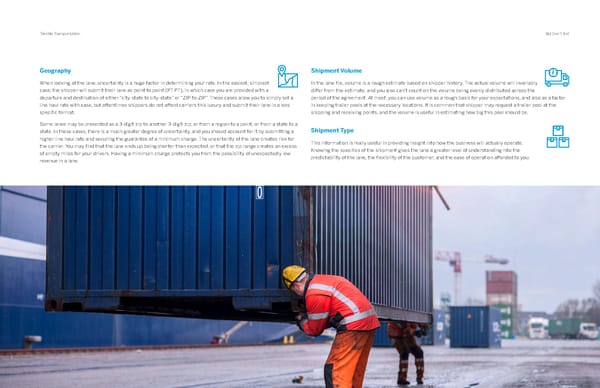7 Trimble Transportation Bid Don’t Bet When looking at the lane, uncertainty is a huge factor in determining your rate. In the easiest, simplest case, the shipper will submit their lane as point to point (PT PT), in which case you are provided with a departure and destination of either “city-state to city-state” or “ZIP-to-ZIP”. These cases allow you to simply set a line haul rate with ease, but oftentimes shippers do not afford carriers this luxury and submit their lane in a less specific format. Some lanes may be presented as a 3-digit-zip to another 3-digit-zip, or from a region to a point, or from a state to a state. In these cases, there is a much greater degree of uncertainty, and you should account for it by submitting a higher line haul rate and securing the guarantee of a minimum charge. The uncertainty of the lane creates risk for the carrier. You may find that the lane ends up being shorter than expected, or that the zip range creates an excess of empty miles for your drivers. Having a minimum charge protects you from the possibility of unexpectedly low revenue in a lane. In the lane file, volume is a rough estimate based on shipper history. The actual volume will invariably differ from the estimate, and you also can’t count on the volume being evenly distributed across the period of the agreement. At most, you can use volume as a rough basis for your expectations, and also as a factor in keeping trailer pools at the necessary locations. It is common that shipper may request a trailer pool at the shipping and receiving points, and the volume is useful in estimating how big this pool should be. Geography Shipment Volume This information is really useful in providing insight into how the business will actually operate. Knowing the specifics of the shipment gives the lane a greater level of understanding into the predictability of the lane, the flexibility of the customer, and the ease of operation afforded to you. Shipment Type
 Bid Don't Bet Page 6 Page 8
Bid Don't Bet Page 6 Page 8